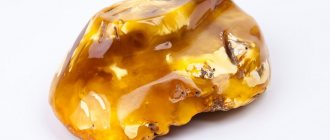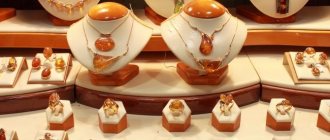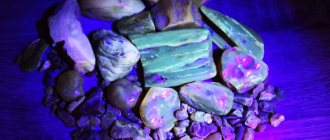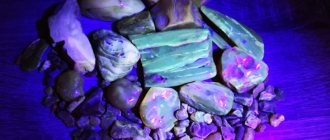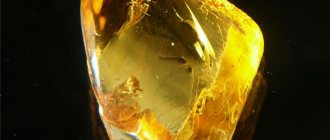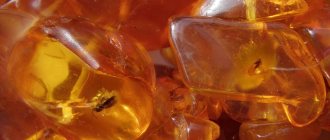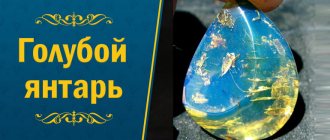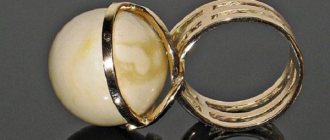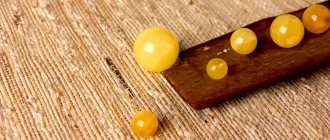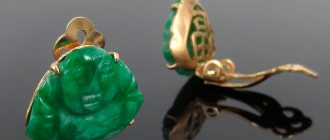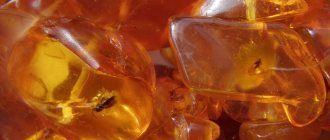Amber is a stone with which many legends have been associated from time immemorial. There is a well-known ancient Greek legend about how this stone appeared. A wonderful myth tells how the son of the Sun god, Phaethon, for a long time asked his father for permission to ride through the celestial spheres in his chariot. Perhaps, with the help of this story, the ancient Greeks wanted to figuratively tell people about the true nature of amber.
The Legend of Phaeton: A Hint of the True Nature of Amber
Many times Phaethon asked his father Phoebus, the ruler of the movements of the celestial bodies, to allow him to mount the chariot and drive it. For a long time, Phoebus did not allow his son to ride because he was not confident in his abilities. But one day the father gave in in response to Phaeton’s constant pleas. Being self-confident, but physically very weak and inexperienced, the young man could not cope with his father’s hot horses. The chariot, having lost control, rushed at a close distance from the Earth. The heat of the sun instantly dried up all the rivers and burned out the forest. A lot of people died, and instead of rich green forests, rocky slopes formed in Greece. Africa turned into a desert, and its inhabitants turned black from the heat.
Zeus the Thunderer, seeing what Phaeton had done, intervened, fatally striking the self-confident young man with a lightning strike. The phaeton fell into the river, and his sisters and mother, mourning the loss, forever bowed over the last refuge of the young man, turning into branchy trees. The tears of the trees fell into the water, turned into amber, and the sea water carried it to great depths. That is why it is still found on the seashore to this day.
In the legend about the unlucky young man there are many real events that figuratively reflected the climate changes that have occurred on Earth for many thousands of years. Once upon a time in Greece the forests really rustled, and Africa was a generous haven of deep rivers and tropical plants. And amber is indeed very similar to tree tears, but coniferous trees have been dropping these “tears” for many millions of years - moreover, in different parts of our planet. This is what allows us to think about how many undiscovered amber deposits lie in the depths of sedimentary rocks.
Mineral concentration
Despite the wide distribution of coniferous trees in the Paleogene and Neogene, amber is found unevenly in nature. It has been found on every continent except icy Antarctica, but large deposits have been found in certain regions.
First of all, this is the Baltic-Dnieper province, which is considered the birthplace of the gem. It includes the following countries and regions: Denmark, Germany, Poland, the Kaliningrad region of Russia, the Baltic states, Belarus, Ukraine. High-quality samples are found here; they account for the maximum production of ornamental stone. Fossil resin - tree resin - was originally generated along the entire Baltic coast in large quantities. Scientists explain such volumes by climate warming. And the movement of glaciers shifted the amber deposits towards the Carpathians and the Black Sea, as a result, secondary deposits were formed.
Younger deposits are in Haiti, where honey-red, green, and blue amber are mined. It contains many inclusions - both insects and invertebrates.
The Caribbean gem, formed from the resin of the hymen, also occurs in blue sedimentary rocks containing glauconite.
In the area of the West Indian coal deposit Cambay - in sandstones and clays - deposits of unusual amber were discovered. It is characterized by a huge number of insects, many of which are discovered for the first time. Moreover, the stone is formed from the resin of not coniferous, but deciduous trees of the Dipterocarpaceae family. Amber is soft and soluble in chloroform and toluene. It is of scientific interest.
Features of amber
According to experts, the total amount of amber that exists on Earth is many thousands of tons, because coniferous trees, due to the antiquity of their origin, have been “engaged in the production of amber” for more than a hundred million years. As for the actual production of this stone, it amounts to modest hundreds of tons per year.
This happened because tree resin, which is petrified, is a substance of low stability. It is not able to withstand conditions of high temperatures and pressure, and since the layers of amber tend to lie at great depths, this can complicate the process of their extraction so much that the stone of the Sun can significantly exceed even gold in cost.
Only those stone samples that are not hidden at a very great depth fall into human hands. The sea can also generously share amber with people: it is light and floats well in water due to the fact that it has a very low density. When a storm erodes the bottom of the sea, amber comes to the surface of the water, and strong winds and stormy waves throw it onto the shores.
Amber is famous for its inclusions - particles of plants, insects, arachnids and even vertebrates, trapped in pine resin millions of years ago. But not every stone can boast such a feature, only 10%. Amber with inclusion is a find for collectors and paleontologists.
Where does the name “amber” come from?
In the languages of different peoples, this word takes on different sounds. In German it is “bernstain”, which means “burning stone”, and the Ukrainian “burshtyn” almost completely repeats the German pronunciation. In European languages, the Arabic word “anbar” or “anvar” has taken root well, and the Greek “electron” means a star that shines the color of amber in the constellation Taurus.
The original Russian name “alatyr-stone” is a modified version of a difficult-to-pronounce Greek word. By the way, the famous Latvian “dzintars” has its origin in the verb “ginti”, which means “to protect”. Since the Baltic shores have been rich in amber since ancient times, Latvians often made amulets and amulets from it, which, according to legend, could serve as protection from many evils and disasters. About the magical properties of amber →
Appearance of the stone
The gem is an asymmetrical stone of various colors: from opaque white to rich orange-brown. Minerals of blue, green and bright red colors are very rare. The surface structure of the stone is uneven, transparency varies from completely opaque to translucent and transparent.
The stone may have organic inclusions: for example, a frozen fragment of an ancient insect or plant. One piece of stone may have several different pieces of amber that differ in texture or color. Often there are bubbles, microcracks, and dust inside the stone.
Varieties and colors of amber
Today you can find different types of stone on sale:
| Succinite | Baltic stone is the most common type of amber in the world. |
| Bokkerit | Dark, opaque soft stone. |
| Gedanite | “Rotten amber” is dark brown, dirty yellow, interspersed with colorless oxides. |
| Glessite | A type of succinite that includes organic inclusions and impurities. A soft, opaque brown stone. Ornamental. |
| Stanthienite | Black amber, extremely fragile, an endangered type of stone. |
Blue amber is a hard stone with a soft blue to dark blue hue. Most often found in the Dominican Republic and Mexico. A distinctive feature is that the stone glows in the dark, but has a yellow tint when exposed to light!
According to the degree of transparency, varieties are distinguished:
- Transparent (batter) – absolutely transparent amber;
- Bastard - medium transparency, heterogeneous, textured;
- Smoky - translucent, cloudy and heterogeneous stone;
- Bone - an ivory-colored stone, opaque;
- Foamy – the appearance resembles foam, the texture contains many small voids. Lightweight, opaque;
- Overburden is a red hard stone with a dense layer of oxidation.
About the benefits of succinic acid
Baltic amber consists of 8% of this substance, which is vital for every living organism. Succinic acid takes an active part in the exchange of oxygen, thanks to which cellular growth is also activated.
Ancient doctors believed that amber could cure almost all ailments known at that time. It was even practiced to brush teeth with crushed amber powder. It was diluted with honey and used as a remedy for stomach diseases. In the Middle Ages, it was often used as a cosmetic potion and a remedy that effectively healed wounds.
At the present stage, extracting succinic acid from the stone itself has long been considered impractical. Now it can be synthesized chemically, without the use of coniferous tree resin.
Where is amber mined?
Amber is mined not only on the Baltic shores and the North Sea coast. The Dominican Republic is also rich in this wonderful stone. Amber mined in Caribbean waters is primarily yellow in color, but reddish and even blue and green specimens are found. In Ukraine, near the city of Rivne, amber production amounts to several tons per year, and the quality of the stone is no worse than in the Baltic countries.
The Taimyr Peninsula is famous for one of the most ancient stones in origin. Taimyr amber is at least 115 million years old. And the oldest are stones mined in Lebanon: they are about 130 million years old. Baltic amber is quite young in comparison: its “age” does not exceed 40 million years. Read more about the varieties of amber →
Treatment
The structure of amber is very malleable, it easily lends itself to all types of mechanical processing and gluing. But, unfortunately, temperature changes can be critical for it. Amber needs warm and dry air. Only then will he be able to preserve his external beauty for a long time. It is no coincidence that in ancient Egypt, even the pharaohs spoke of amber as a gemstone that was honored to become an adornment for them.
In ancient Rome, amber was cut into gold and looked great in the multi-colored crown of the Roman emperor. If the size of the stone turned out to be suitable and had decent optical qualities, lenses were even made from it for the nobility, which helped visually impaired people see the world around them clearly.
Over time, talented craftsmen discovered that these stones lend themselves perfectly to gluing. This is how boxes with amber inlay, staves and canes, drinking cups, dishes and even watches began to appear.
The history of amber goes hand in hand with the history of the human race. Products made from amber can become a worthy decoration in any form: it is so malleable in the process of processing that you can make anything your heart desires from it. A box or cabinet inlaid with amber splashes can be a wonderful gift for many years. The stone itself lives much longer than we do, and, thanks to the generosity of nature, will always delight us with its unique beauty.
Read about fake amber and how to distinguish a real stone from them in our article.
The important thing is not to win but to take part?
What about law enforcement agencies? How is illegal mining fought? “Operational and preventive raids on places where illegal activities of “black diggers” are carried out and on coastal areas of the sea are carried out almost daily. However, these measures are still ineffective,” admits the head of the Department of Economic Security and Anti-Corruption of the Russian Ministry of Internal Affairs for the Kaliningrad Region, police lieutenant colonel Ruslan Vetyutnev .
Participants in the amber industry explain the very small amount of confiscated amber by the fact that “black diggers”, as a rule, manage to hide and remove the amber before the arrival of operatives. In addition, as the Ministry of Internal Affairs admits, it is possible to reach an agreement with many police officers. Our interlocutors, whom we mentioned at the beginning of the article, told us that , as a rule, those who do not want to pay for information about the time and place of future police raids are detained.
If you pay a weekly bribe through certain intermediaries who have connections in law enforcement circles, then you will always know whether you can go out and work today.
